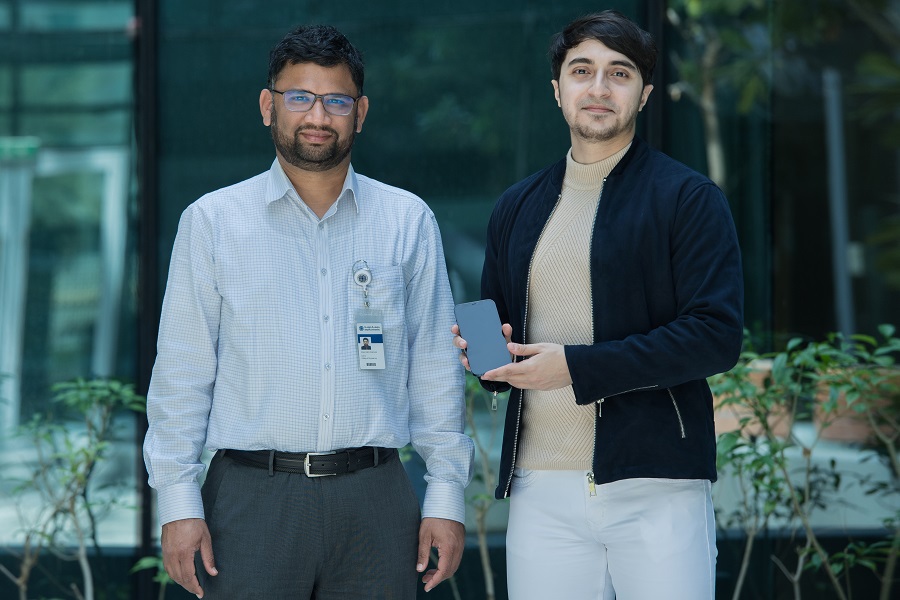
Digital mass testing for Covid-19 could soon be possible through smartphone applications and machine learning techniques to identify patterns in sounds made by simply breathing.
Read the Arabic story here: https://researchku.com/news-extended/249
The sound of a person’s breathing, cough or even their voice could all be used to help diagnose patients with Covid-19, as Khalifa University researchers design an app using artificial intelligence to detect the sounds of a coronavirus infection.
The standard methods to test for Covid-19 rely on polymerase chain reaction (PCR) technologies. While highly accurate, these tests are hindered by the time taken to get results. They also require trained personnel, properly equipped test sites, and robust operational and logistical supply chains. Not to mention, PCR testing is unpleasant for the patient which can deter them from testing regularly.
Finding promising alternatives that are simple, fast and cost-effective is the goal. Plus, since Covid-19 cases continue to increase around the world, a system capable of recognizing the disease in signals recorded by portable devices, such as smartphones, is essential.
Mohanad Alkhodari, Research Associate, and Dr. Ahsan Khandoker, Associate Professor of Biomedical Engineering, investigated the use of breathing sounds and a deep learning framework to determine Covid-19 infections from healthy subjects, including asymptomatic cases. Their results were published in PLOS ONE.
“Recent studies have used new emerging algorithms in artificial intelligence to detect and classify Covid-19 infections in CT and X-ray images, averaging over 95 percent accuracy,” Alkhodari said. “While the imaging techniques aren’t feasible for frequent testing purposes, the machine learning techniques can be used in determining infection from biological respiratory signals, such as coughing and breathing sounds.”
The human body makes all sorts of noises and physicians have used them to diagnose disease—perhaps the most classic medical device is the stethoscope. Auscultation, the technique of listening to the body, can be challenging for humans to grasp accurately, but it’s a simple task for a machine. Artificial intelligence algorithms can identify features or patterns in sounds that the human ear cannot, and can also pick up noises that are beyond human hearing.
“Respiratory auscultation is a safe and non-invasive technique to diagnose the respiratory system and its associated organs,” Alkhodari said. “Clinicians can hear and record the air sound moving inside and outside the lungs while breathing or coughing, and then identify any abnormalities. This could serve as an early alert to a patient before they move on with further testing.”
Previous studies have investigated the information carried in respiratory sounds in patients who tested positive for Covid-19, forming the dataset necessary to train a machine learning algorithm. Additionally, the vocal patterns seen in patients with Covid-19 show indicative biomarkers for viral infection. While work has already started on using AI to recognize infection in cough signals, the Khalifa University approach is the first to detect Covid-19 using only breathing sounds.
“Although the current gold standard, PCR testing has various limitations, including the high expenses involved in equipment and chemical agents, the need for experts for diagnosis, and the long wait needed for results,” Dr. Khandoker said. “A handheld deep learning model overcomes most of these limitations and allows for a better revival of the healthcare and economic sectors in several countries.”

The team focused on a dataset from India, using a total of 480 breathing sounds from a publicly available dataset. These sounds were recovered by an equal number of healthy and infected subjects using a smartphone microphone and fed into the deep learning framework.
“India is severely suffering from a new genomic variant of Covid-19,” Dr. Khandoker said. “This gives us an insight to the ability of the AI algorithms in detecting infection in patients carrying this new variant, as well as asymptomatic patients.”
The results obtained from testing the deep learning framework on the Indian dataset shows its potential for developing telemedicine and smartphone applications for Covid-19 that can provide real-time results in an efficient and timely manner. It could also be extended beyond Covid-19 to future pandemics or other respiratory diseases. For countries experiencing high infection rates, this technique would also mean isolation behaviors could be maintained, reducing further infection spread, but also provide a diagnostic test that is much cheaper for places struggling to implement the infrastructure needed for mass PCR testing.
“This study paves the way towards implementing deep learning in Covid-19 diagnostics,” Dr. Khandoker said.
Jade Sterling
Science Writer
1 March 2022






